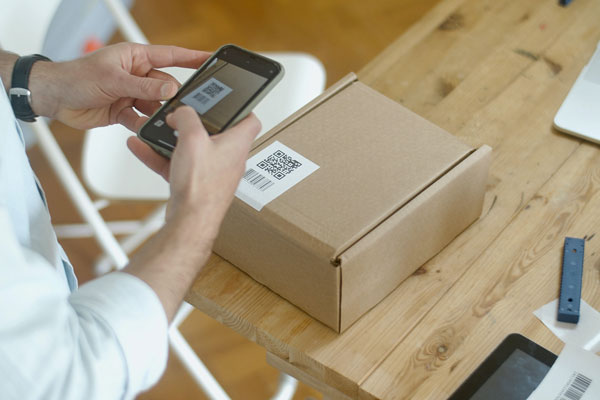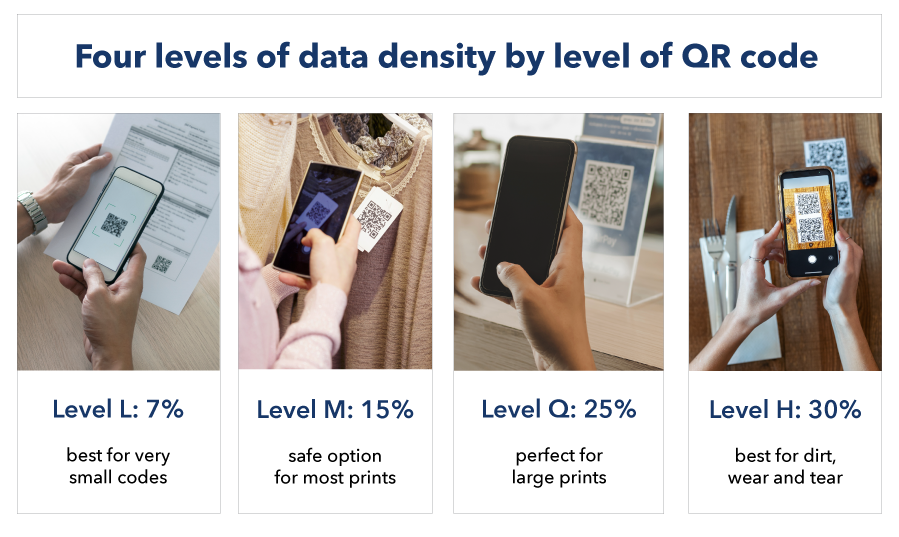Contents
Say "Hey"👋
Subscribe for weekly updates

Bridge the Physical and the Digital With QR Marketing
QR scans jumped from 9 million to 11 million in 2020. Total smartphone scans are expected to pass 1 billion in 2022. It’s more important than ever for businesses to understand the part that QR codes play in the modern business landscape. Let’s roll up our sleeves and talk about how these little barcodes work.

Step-by-step QR process:

The only difficult part is getting started. These resources are an excellent start. They break down the topic into a step-by-step process:
Since our inception, we've been leveraging marketing channels for optimized success.
Follow our blog for deep recurring dives into hybrid marketing techniques.
What is a QR code anyway?
QR stands for quick response code. They’re what we call a 2D or matrix barcode. Think of a square barcode that can be scanned from any direction. They were originally designed in Japan to provide high-speed scanning and tracking for automotive manufacturing. Global businesses quickly caught on and adopted the technology. But what makes QR codes more attractive than a standard horizontal barcode?- QR codes are 10x smaller than standard horizontal barcodes. This makes them ideal for smart phone screens and product labels
- QR codes can be read from any angle. Instead of lining up a scanner, QR codes align themselves. This makes them a perfect option for sharing mobile accounts, scanning a gym pass, or opening menus from a bar top
- QR codes store significantly more data. A horizontal barcode can only store up to 25 characters, while a QR code can store over 2500 characters. This makes it a superior option for linking URLs with tracking data
- QR codes have built in error management by design. There are multiple layers of the same code making it possible to scan with damage or coverage. They’re the perfect option for packaging and outdoor marketing, when wear, tear and dirt are considerations
- QR codes have 4 levels of data density. The higher the density, the higher the error correction; but the higher the density, the harder it is to make small prints. The 4-levels are L, M, Q and H. Level L and M are less dense with lower correction, perfect for small prints. Level Q and H have higher correction levels which is best for environments where codes get beaten up

How do QR codes work?
QRs are machine scannable codes. They contain a locator, identifier and tracker. The 3 big squares in each corner are called the eyes. The eyes are used to orient the QR code once scanned. The white border around the QR, known as the quiet zone, is used to scale and line the code up properly. The meat, all those lines and dots in the center, is the data module. The data module relays binary, alphanumeric, numeric, and kanji (the Japanese writing system) back to the device when scanned.Step-by-step QR process:
- Scan the QR code
- Your scanner uses the 3 eyes and quiet zone to position the code correctly
- The scan starts in the right-hand corner. The first block is a mode indicator, which indicates the data type (binary, alphanumeric, numeric, or kanji)
- The next blocks are a character counter, which just tells the scanner how long your text is
- The scanner then snakes its way across the code in a zig zagged path
- About half-way, it reaches a stop indicator
- The scanner then follows a path of error correcting modules to ensure the barcode is accurately read
- Data is displayed on your scanner

Static vs Dynamic QR codes
There are two types of QR codes, dynamic and static. Static codes are once-generated codes that cannot be changed. Dynamic codes let you change the content as much as you want. Dynamic codes also tend to cost money and require software to manage, but they have superior flexibility.- Static QR Codes:
- One-time single-use codes
- Top choice for personal use
- Primarily incorporated by individuals that don’t need to edit the content or track campaigns
- Great for portfolios, online course links and inventory details
- Dynamic QR codes:
- Edit the QR code’s location and add tracking information
- Dynamic QRs need 3rd party software to manage data
- Primarily used by businesses
- Great for restaurants with changing menus and deals, sales business cards (changing the URL location when switching gigs), monitoring marketing stats
Tracking your dynamic QR codes with Google Analytics
QR codes are simple by nature. People scan them to access a webpage or resource. Because of this, tracking their performance is incredibly easy. And tracking through Google analytics is free with access to every tool imaginable. You can trace the IP address for each scan, giving you data on users’ specific city, country, date, time, demographics, engagement and sales funnels. You can closely monitor your restaurant and retail performance, see what billboards and posters are performing, and even drill into buyer demographics.The only difficult part is getting started. These resources are an excellent start. They break down the topic into a step-by-step process:
- Check out this guide for creating UTM Tracked campaigns
- Here is Google’s tool for creating tracked URLs
- Here is a guide for using Google Analytics to monitor demographics and location
Boosting engagement is made easy with QR codes
QR codes are a true bridge between digital and physical marketing campaigns. They’re a trusted and easy method for driving people over to websites, social platforms and apps. Unlike other physical marketing techniques though, QRs let you track scans and leverage demographic data for added value, engagement and ROI.Since our inception, we've been leveraging marketing channels for optimized success.
Follow our blog for deep recurring dives into hybrid marketing techniques.




